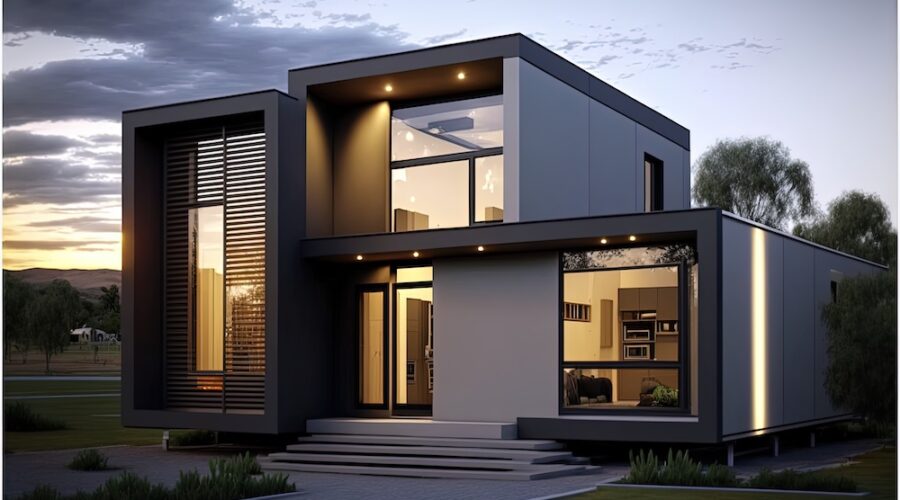
Housing costs continue to increase and it is becoming increasingly difficult for younger generations to own their own home or apartment. alternatives, which are more affordable and accessible, have been considered to solve this growing issue. In this way, modular or prefabricated houses are offered as an alternative for those who want to build a home without exceeding their budget.
According to prefab home kits experts, because these houses can be built on land already owned, they are gaining in popularity. This post will describe in detail the benefits of this type of construction.
Characteristics of prefabricated houses
Prefabricated houses are made up of components that have already been manufactured. The house, also called 2D, is composed of two-dimensional structural components (panels). These elements (walls and ceilings ) are then mass-produced, and transported to the location where the house will eventually be installed.
These modules, once they reach their destination are assembled into the structure of the house. To achieve the desired result, assembly is required. This can all be done in a short time, usually a few days.
Modular homes are made in modules that, when combined with others, create the basic structure of the home. They are structural enclosures that can be stacked on top of each other to create various spaces within the house.
Modular and prefabricated homes: Advantages
If you decide to choose this type of construction, there are several advantages that prospective buyers should consider.
- Time Saving: Because the house is built in a factory construction takes a fraction of the time it would take to build if you were building a traditional home. The modules are built in parallel with the preparation of the land, so the building process is accelerated.
- They are more economical, as they can be budgeted better because the construction costs are predictable. They are also much cheaper than conventional housing.
- Custom design: Although they generally follow standard designs, you can customize them to suit your tastes, needs, and budget.
- Less wastage: As its components are produced in mass, under controlled conditions, and using optimized processes, errors, and waste materials are minimized.
- Construction deadlines: Construction times can be significantly shorter than traditional. The time can range from a few weeks to several months depending on the size of the house and its level of customization. The majority of the time is spent on manufacturing the modules and preparing land. Assembling the house only takes a few days.
Prefabricated and modular houses tend to be more affordable than the traditional construction. However, it is important to compare options to get a detailed quotation.
Modular and prefabricated homes: Disadvantages
- Limitations: While you can customize modular and prefabricated homes, they may have limitations when compared with traditional construction. Design and finish options are limited when mass-produced parts are used.
- Logistics and Transportation: Transporting components or modules to the installation site from the factory can be logistically challenging. It is important to plan the transportation carefully, considering the accessibility of heavy machinery and assembly space.
- Additional Costs: While the purchase price is set at the time, there may be additional costs such as the cost of land preparation, utilities, permits, and licenses. The price of the land on which the house is to be built.
- Maintenance: This type of home may need more maintenance depending on the material (wood, steel, or concrete) that it was built with. It will also be determined by the climate of the area.
As long as the prefabricated or modular home is in compliance with local regulations, and all permits are obtained, it can be installed on urban land.
Depending on each autonomous community’s regulations, they may be installed on rural property. However, these are rare cases and there are restrictions on size and use.
This plot must be level, and have an evacuation and water supply network, access to electricity, and a road. The land will need to be leveled if it is inclined. This increases the cost of building a home.
You must be familiar with the local regulations before building this type of home. This includes the setbacks and height restrictions, as well as the maximum area of the house.






